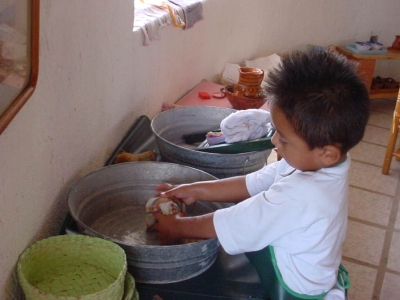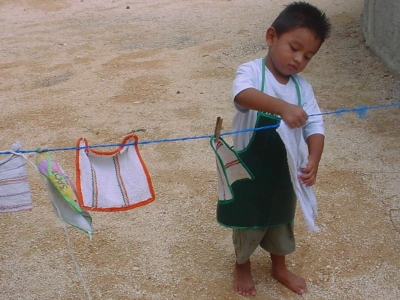The inner necesity to work
 From the moment the infant is born she is working to eat, move and grow. She is driven along her path of development. Montessori observed the child’s needs to work in the earliest of her experiments. Placing practical life exercises and toys alongside each other is the first casa dei bambini, the children ignored the toys and gravitated towards all of the purposeful work.
From the moment the infant is born she is working to eat, move and grow. She is driven along her path of development. Montessori observed the child’s needs to work in the earliest of her experiments. Placing practical life exercises and toys alongside each other is the first casa dei bambini, the children ignored the toys and gravitated towards all of the purposeful work.
At first the child’s efforts are self-centered and only for mastering self-care. As they grow, the work expands to the environment around them. The real work that the home and the classroom provide draws the children into activity. Washing and scrubbing, sweeping and gardening all call to the child’s inner urge to use their hands and bodies to accomplish a task. The child does not do this work for external rewards, but for the satisfaction of the work itself. The more skilled they become, the more helpful they can be. Before long they see that they can also be helpful to their peers.
 Dr. Montessori noted: “if he washes the dishes he cleans those which others have soiled, and if when he lays the table he works for the benefit of a many others who have not partaken the work with him. And in spite of this he does not consider this work done in service as a supplementary effort deserving of praise. No, it is the effort itself, which is for him the most sought after prize. In this way the part of the exterior activity of the child, which is aimed towards social purposes, is developed”.
Dr. Montessori noted: “if he washes the dishes he cleans those which others have soiled, and if when he lays the table he works for the benefit of a many others who have not partaken the work with him. And in spite of this he does not consider this work done in service as a supplementary effort deserving of praise. No, it is the effort itself, which is for him the most sought after prize. In this way the part of the exterior activity of the child, which is aimed towards social purposes, is developed”.
Organically, this work becomes a contribution to the community and fulfills a social function. The work of the elementary child continues to drive them beyond the classroom leading them further into the community. Eventually, we see the beginnings of the conscious, intentional service. The child formulates how to match actions with needs.
Would you like to become a Montessori Guide and live the joy of Riviera Maya? Cursos AMI en Cancún
Comentarios recientes